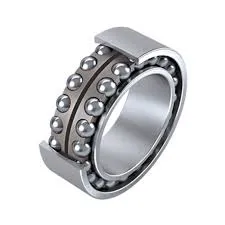
Dec . 03, 2024 23:05 Back to list
Dimensions and Specifications for 6326 Bearings in Mechanical Applications
Understanding 6326 Bearings Dimensions and Applications
Bearings are crucial components in various machinery and equipment, playing a pivotal role in reducing friction and supporting loads. Among the myriad of bearings available, the 6326 bearing is notable for its robust design and versatile applications. In this article, we will explore the dimensions of the 6326 bearing, its construction, and where it is typically used.
Dimensions of the 6326 Bearing
The 6326 bearing is part of the series of deep groove ball bearings. Its dimensions are standardized, making it easy to replace and compatible with various applications. The key specifications of a 6326 bearing include
- Inner Diameter (ID) 130 mm - Outer Diameter (OD) 280 mm - Width (B) 58 mm
These dimensions allow the 6326 bearing to support significant radial and axial loads, making it suitable for high-speed applications. The deep groove design facilitates the accommodation of radial loads and axial loads in either direction, contributing to its wide usage across different industries.
Construction and Features
The 6326 bearing typically consists of several key components the inner race, outer race, balls, and a cage. The inner and outer races are made of high-quality steel, providing durability and resistance to wear and tear. The steel balls, which are housed in a cage, reduce friction and allow for smooth rotation.
Many manufacturers also offer 6326 bearings with various seals or shields. These options provide protection against contaminants, such as dust and moisture, which can significantly extend the lifespan of the bearing.
Applications of 6326 Bearings
The versatility of the 6326 bearing makes it suitable for a wide range of applications across different industries
6326 bearing dimensions

1. Electric Motors The 6326 bearing is often utilized in electric motors, where its ability to operate at high speeds and under varying loads is essential.
2. Machine Tools In manufacturing setups, 6326 bearings are used in machine tools to ensure precise movement and enhance the efficiency of operations.
3. Agricultural Equipment The bearing's robust design allows it to withstand harsh conditions, making it an ideal choice for agricultural machinery.
4. Heavy Machinery Equipment used in construction and mining industries frequently employs 6326 bearings for their reliability and load-bearing capabilities.
5. Automotive Applications In vehicles, these bearings are commonly found in wheel hubs, transmissions, and other rotating components, contributing to the overall performance and durability of the vehicle.
Maintenance and Lifespan
Maintaining 6326 bearings is crucial for ensuring their longevity and optimal performance. Regular inspection for signs of wear, such as noise or vibration, can help identify potential issues early. Lubrication is also important; using the correct type of grease or oil can significantly enhance the bearing's lifespan and performance.
In environments where contamination is a concern, opting for sealed or shielded versions of the 6326 bearing can provide added protection, thus minimizing maintenance needs and downtime.
Conclusion
In summary, the 6326 bearing is a vital component in various mechanical applications due to its reliability and ease of use. Its standardized dimensions—inner diameter of 130 mm, outer diameter of 280 mm, and width of 58 mm—along with its robust construction, make it a preferred choice in several industries, including manufacturing, agriculture, and automotive.
As technology continues to advance, the demand for efficient and durable bearings like the 6326 will likely grow. Understanding the specifications and applications of these bearings can help engineers and technicians make informed decisions when selecting components for their machinery, ultimately leading to improved performance and longevity of equipment. Investing in quality bearings such as the 6326 is essential for meeting the rigorous demands of modern industry.
Latest news
-
Premium Deep Groove Ball Bearings | High Speed & Reliability
NewsAug.29,2025
-
Durable Scaffolding Clamps - Secure & Reliable Tube Connectors
NewsAug.28,2025
-
Common Failures in Thrust Ball Bearings and Solutions
NewsAug.22,2025
-
How Tapered Roller Bearings Can Take Shock Loads
NewsAug.22,2025
-
Angular Bearings in High-Precision Spindles
NewsAug.22,2025
-
The Impact of Misalignment on Cylindrical Roller Bearing Performance
NewsAug.22,2025
